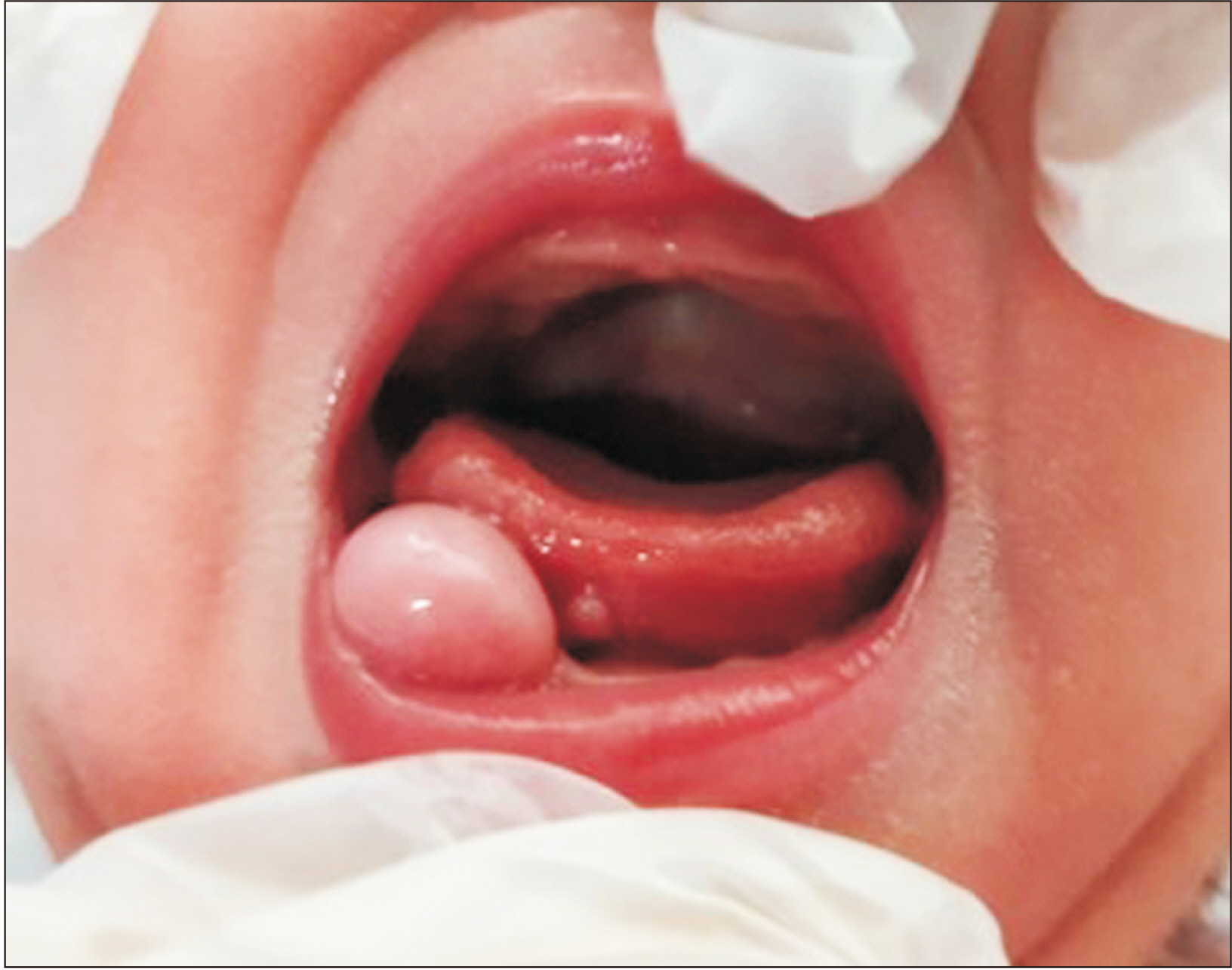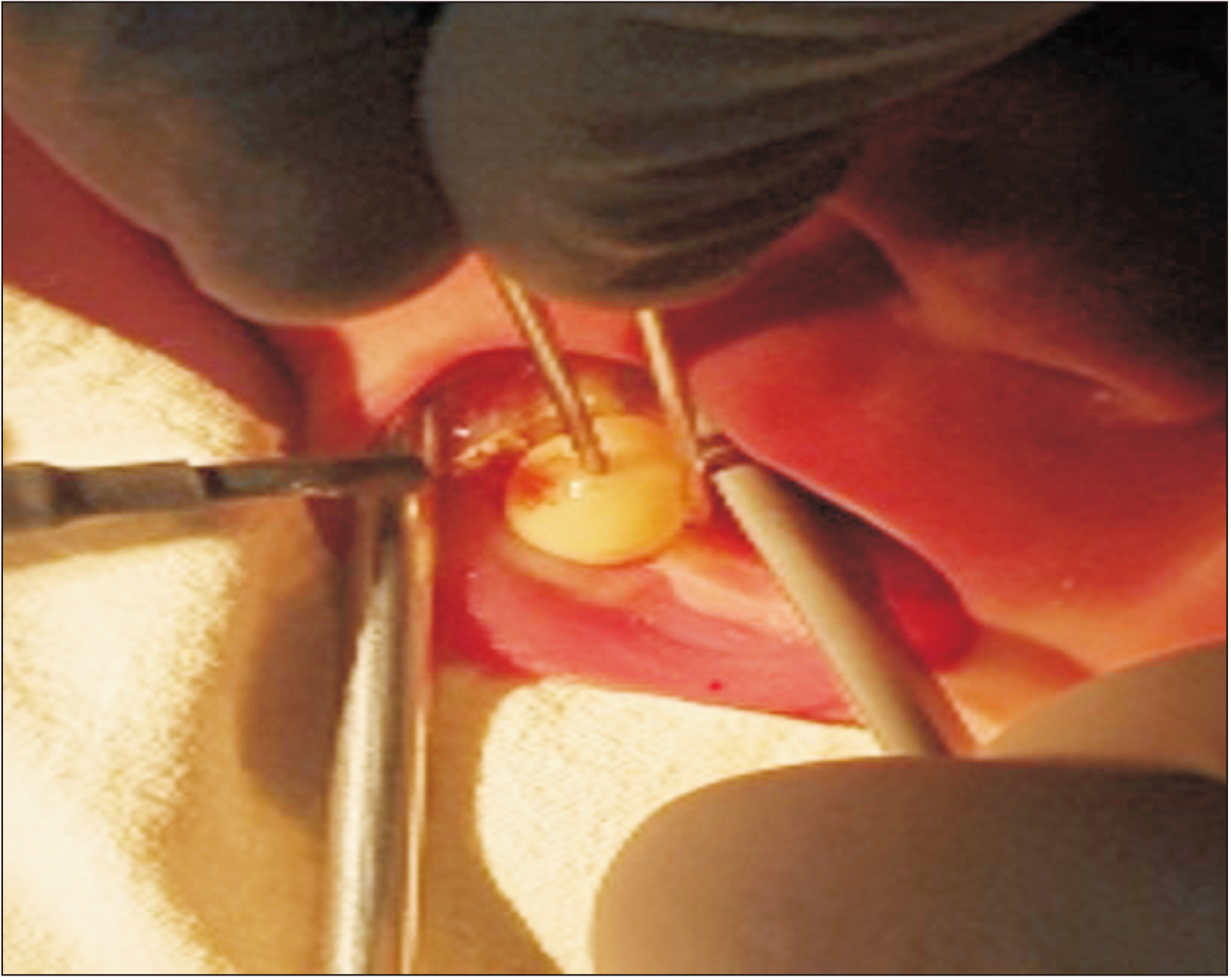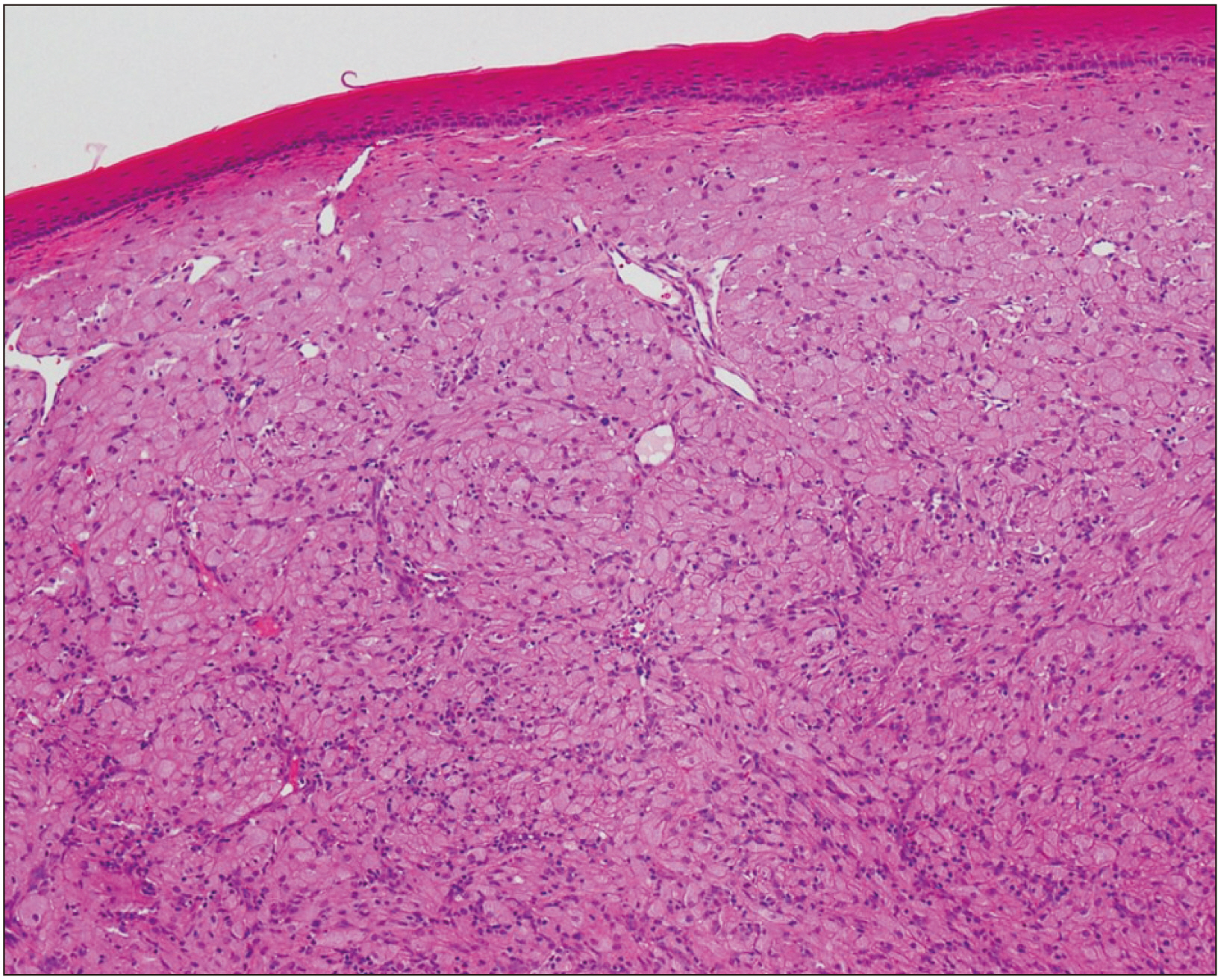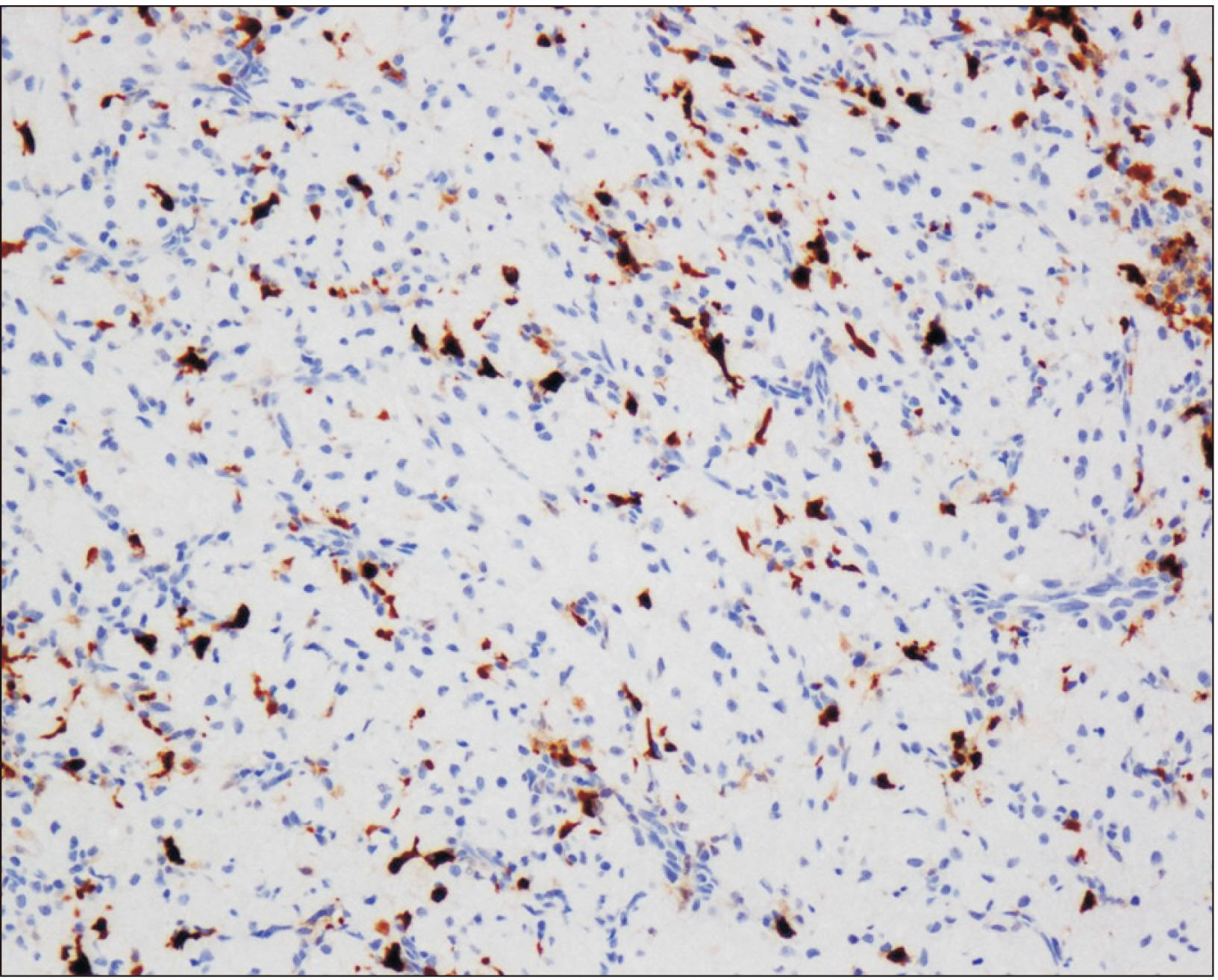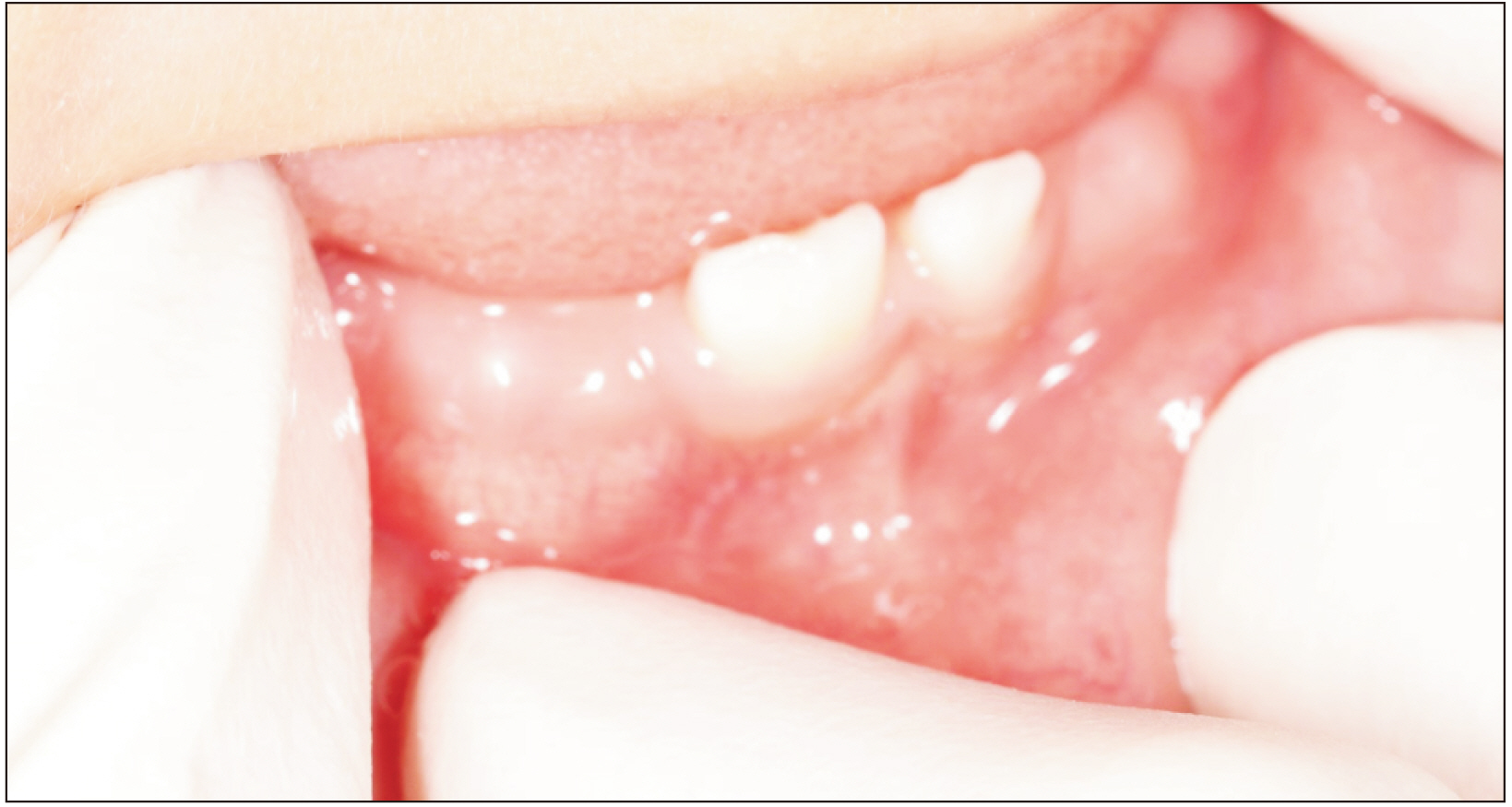J Korean Assoc Oral Maxillofac Surg.
2022 Dec;48(6):382-385. 10.5125/jkaoms.2022.48.6.382.
Congenital epulis in a newborn
- Affiliations
-
- 1Department of Oral and Maxillofacial Surgery, National Health Insurance Service Ilsan Hospital, Goyang, Korea
- KMID: 2537564
- DOI: http://doi.org/10.5125/jkaoms.2022.48.6.382
Abstract
- Congenital epulis (CE) is an extremely rare benign tumor of the gingiva that is found on the alveolar ridge of newborns, and the main treatment option is simple excision. Postoperative prognosis is very good, and spontaneous regression may occur despite incomplete excision. This report presented a rare case of CE and its healing process after surgery under local anesthesia. The treatment plan was decided upon through consultation between a medical team and the patient’s family, with surgical excision for the main lesion, which benefitted from surgery, and follow-up for a very small-sized lesion, which was thought to be appropriate for a newborn. No recurrence was found after its removal, and favorable healing was observed.
Keyword
Figure
Reference
-
References
1. Childers EL, Fanburg-Smith JC. 2011; Congenital epulis of the newborn: 10 new cases of a rare oral tumor. Ann Diagn Pathol. 15:157–61. https://doi.org/10.1016/j.anndiagpath.2010.10.003. DOI: 10.1016/j.anndiagpath.2010.10.003. PMID: 21393037.2. Bosanquet D, Roblin G. 2009; Congenital epulis: a case report and estimation of incidence. Int J Otolaryngol. 2009:508780. https://doi.org/10.1155/2009/508780. DOI: 10.1155/2009/508780. PMID: 20130770. PMCID: PMC2809329.3. Klingler PJ, Seelig MH, DeVault KR, Wetscher GJ, Floch NR, Branton SA, et al. 1998; Ingested foreign bodies within the appendix: a 100-year review of the literature. Dig Dis. 16:308–14. https://doi.org/10.1159/000016880. DOI: 10.1159/000016880. PMID: 9892790.4. Yuwanati M, Mhaske S, Mhaske A. 2015; Congenital granular cell tumor - a rare entity. J Neonatal Surg. 4:17. DOI: 10.47338/jns.v4.170. PMID: 26034711. PMCID: PMC4447470.5. Vered M, Dobriyan A, Buchner A. 2009; Congenital granular cell epulis presents an immunohistochemical profile that distinguishes it from the granular cell tumor of the adult. Virchows Arch. 454:303–10. https://doi.org/10.1007/s00428-009-0733-y. DOI: 10.1007/s00428-009-0733-y. PMID: 19205730.6. Wittebole A, Bayet B, Veyckemans F, Gosseye S, Vanwijck R. 2003; Congenital epulis of the newborn. Acta Chir Belg. 103:235–7. https://doi.org/10.1080/00015458.2003.11679415. DOI: 10.1080/00015458.2003.11679415. PMID: 12768872.7. Roy S, Sinsky A, Williams B, Desilets V, Patenaude YG. 2003; Congenital epulis: prenatal imaging with MRI and ultrasound. Pediatr Radiol. 33:800–3. https://doi.org/10.1007/s00247-003-1024-4. DOI: 10.1007/s00247-003-1024-4. PMID: 12961042.8. Stewart CM, Watson RE, Eversole LR, Fischlschweiger W, Leider AS. 1988; Oral granular cell tumors: a clinicopathologic and immunocytochemical study. Oral Surg Oral Med Oral Pathol. 65:427–35. https://doi.org/10.1016/0030-4220(88)90357-x. DOI: 10.1016/0030-4220(88)90357-X. PMID: 2834681.9. Lack EE, Perez-Atayde AR, McGill TJ, Vawter GF. 1982; Gingival granular cell tumor of the newborn (congenital "epulis"): ultrastructural observations relating to histogenesis. Hum Pathol. 13:686–9. https://doi.org/10.1016/s0046-8177(82)80018-x. DOI: 10.1016/S0046-8177(82)80018-X. PMID: 6282735.10. Bertozzi M, Nardi N, Falcone F, Prestipino M, Appignani A. 2010; An unusual case of asymptomatic appendicular cutting foreign body. Pediatr Med Chir. 32:223–5. PMID: 21171522.11. Elkousy H, Harrelson J, Dodd L, Martinez S, Scully S. 2000; Granular cell tumors of the extremities. Clin Orthop Relat Res. 380:191–8. https://doi.org/10.1097/00003086-200011000-00026. DOI: 10.1097/00003086-200011000-00026. PMID: 11064991.12. Sakai VT, Oliveira TM, Silva TC, Moretti AB, Santos CF, Machado MA. 2007; Complete spontaneous regression of congenital epulis in a baby by 8 months of age. Int J Paediatr Dent. 17:309–12. https://doi.org/10.1111/j.1365-263X.2006.00795.x. DOI: 10.1111/j.1365-263X.2006.00795.x. PMID: 17559460.13. López de Lacalle JM, Aguirre I, Irizabal JC, Nogues A. 2001; Congenital epulis: prenatal diagnosis by ultrasound. Pediatr Radiol. 31:453–4. https://doi.org/10.1007/s002470000416. DOI: 10.1007/s002470000416. PMID: 11436896.14. Fister P, Volavsek M, Novosel Sever M, Jazbec J. 2007; A newborn baby with a tumor protruding from the mouth. Diagnosis: congenital gingival granular cell tumor. Acta Dermatovenerol Alp Pannonica Adriat. 16:128–30. PMID: 17994174.
- Full Text Links
- Actions
-
Cited
- CITED
-
- Close
- Share
- Similar articles
-
- A Case of Congenital Epulis Arising from the Mandibular Gingiva
- Congenital Epulis: A Report of Two Cases
- A case report of congenital epulis: Congenital gingival granular cell tumor
- Congenital Fibrous Epulis in the Infant
- A case of fetal congenital epulis mimicking oral tumor detected by prenatal ultrasonography

